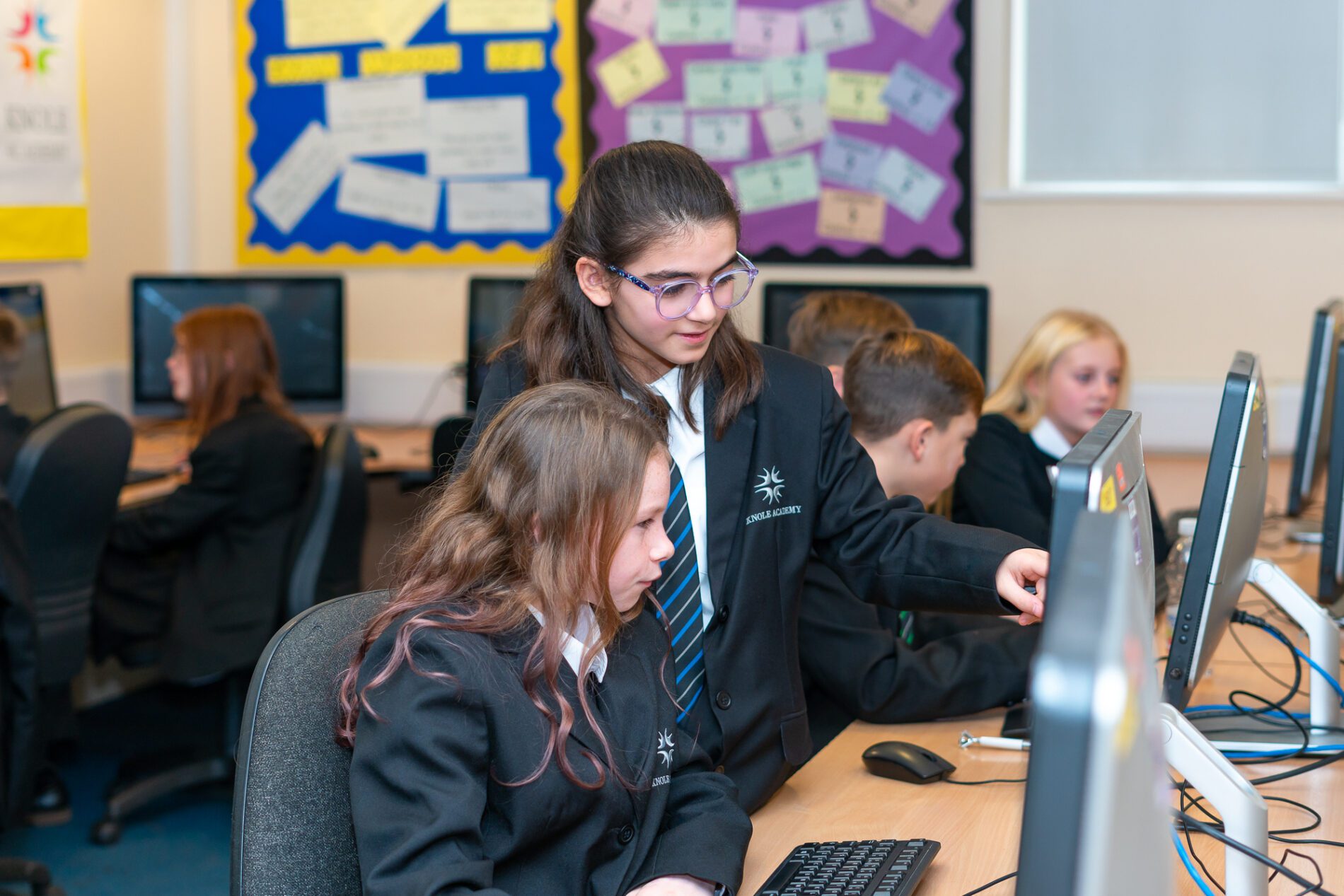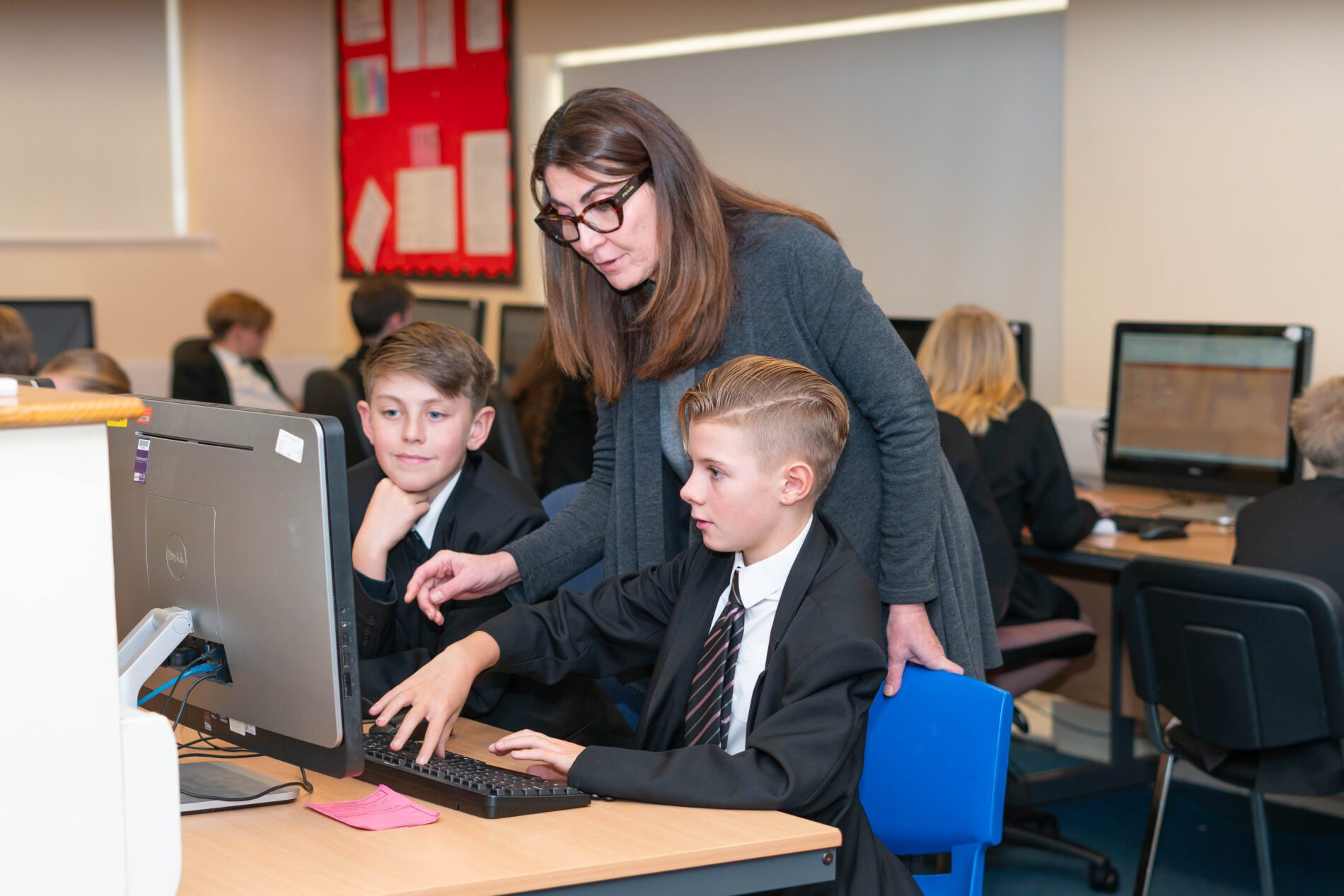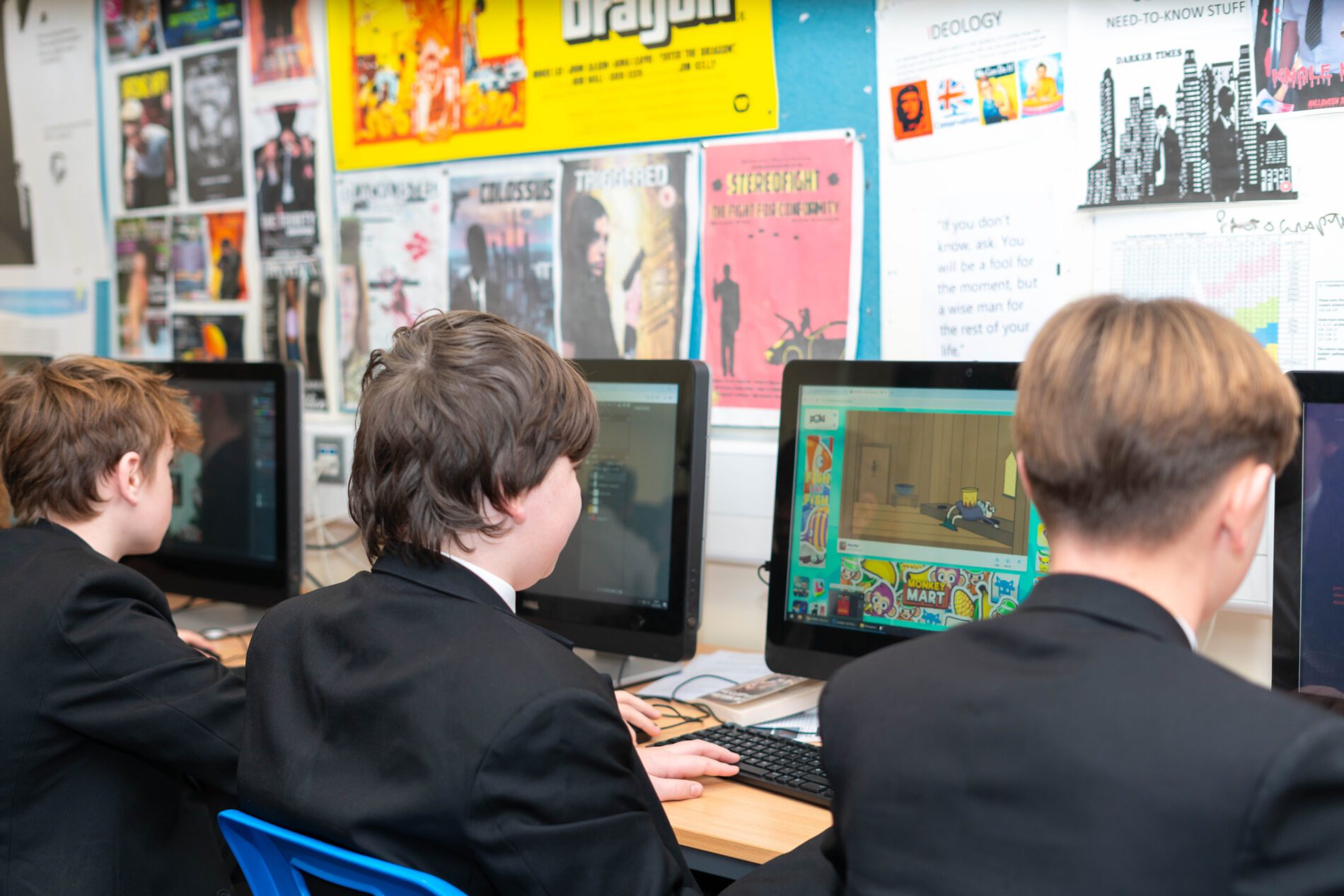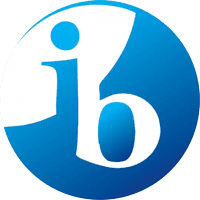Subject Leader: Miss C Shea – cshea@knoleacademy.org
Subject Teachers: Mr L Challenor and Mrs C Gouli
Exam Boards: WJEC (Year 11) and OCR (Year 10)
At Knole Academy our ICT curriculum is designed to empower students with the essential digital skills and knowledge required in today’s technologically driven world. Our aim is to develop students who are proficient, confident, and responsible users of information and communication technology, equipped to thrive in their academic pursuits and future careers.
Intent
- Digital Literacy: We strive to ensure that all students acquire a comprehensive understanding of digital literacy. This includes the ability to use technology effectively and safely, understanding the implications of digital footprints, and developing critical thinking skills to navigate online information.
- Technical Proficiency: Our curriculum fosters technical proficiency by providing hands-on experience with a variety of software tools, programming languages, and hardware components. Students will learn to design, create, and troubleshoot digital solutions, preparing them for further education and employment in ICT-related fields.
- Innovative Thinking: We encourage innovative thinking by incorporating project-based learning and real-world applications of ICT. Students are challenged to solve complex problems, collaborate with peers, and create original projects that demonstrate their understanding and creativity.
- Ethical Use: A key component of our curriculum is the promotion of ethical and responsible use of technology. We emphasise the importance of online safety, data privacy, and the ethical considerations of digital communication and content creation.
- Inclusivity and Accessibility: We are committed to creating an inclusive learning environment where every student has equal access to ICT resources and opportunities. Our curriculum is designed to cater to diverse learning needs and to inspire all students, regardless of their background or prior experience with technology.


Implementation
- Structured Learning Path: The ICT curriculum is structured to build on students’ prior knowledge, with a clear progression of skills from Key Stage 3 to Key Stage 5. Each stage is carefully planned to ensure a seamless transition and continuous development of ICT competencies.
- Engagement and Participation: We use a variety of teaching methods, including interactive lessons, group projects, and individual assignments, to engage students and encourage active participation. Technology-enhanced learning tools are integrated into our teaching practices to create a dynamic and stimulating learning environment.
- Assessment and Feedback: Regular assessments are conducted to monitor student progress and provide constructive feedback. This helps students understand their strengths, identify areas for improvement, and set personal learning goals.
Impact
- Preparedness for the Future: Our students will finish with a robust foundation in ICT, ready to tackle the challenges of further education, the workplace, and everyday life in an increasingly digital world.
- Critical and Ethical Thinkers: Students develop critical thinking skills and a strong sense of digital ethics, enabling them to make informed decisions and contribute positively to the digital society.
- Innovators and Problem Solvers: Students who study ICT are not only proficient users of technology but also innovators who can think creatively and solve problems efficiently.

ICT in Each Stage
Year 7
Term 1 – In this module, students will explore what it means to be responsible, safe, and respectful digital citizens. They will learn how to use technology thoughtfully, protect their privacy, and interact positively with others online. Key topics include:
- Online Safety: Understanding strong passwords, protecting personal information, and recognizing online risks.
- Digital Wellbeing: Balancing screen time, managing online stress, and using technology in healthy ways.
- Respectful Communication: Practicing kindness online, avoiding cyberbullying, and resolving conflicts respectfully.
- Critical Thinking: Identifying fake news, clickbait, and online scams to make smart choices.
- Digital Footprint: Learning how online actions create a lasting reputation and how to build a positive presence.
- Ethical Use of Technology: Respecting copyright, giving credit, and using resources responsibly.
Term 2 – Hardware and Network – Students will have to create an interactive PowerPoint in order to understand about computer hardware and networks. They will have to create a page for each of the following: input devices, output devices, processing, primary and secondary storage, what is a computer network, different type of topologies, types of operating systems and advantages.
Term 3 – Spreadsheets – students will be introduced to spreadsheets and Microsoft Excel as powerful tools for organizing and analyzing information. They will learn how to create and format spreadsheets, enter and edit data, and use basic formulas such as SUM, AVERAGE, and simple calculations. Students will practice sorting and filtering data to find useful information quickly and will create charts and graphs to present their findings visually. They will also explore how spreadsheets can be used in real-life situations, such as tracking budgets, recording results, or planning events. By the end of the unit, students will have the skills to confidently use Excel to manage and interpret data in a clear and professional way.
Term 4 – Scratch – students will learn the basics of programming using Scratch, a visual coding platform. They will explore how to create interactive stories, animations, and simple games by snapping together code blocks. Students will develop key skills such as sequencing, loops, variables, and conditional statements, helping them understand how computers follow instructions. They will also learn about problem-solving and debugging by testing and improving their projects. Creativity and collaboration will be encouraged as students design their own projects and share them with others. By the end of the unit, students will have a strong foundation in computational thinking and be confident in using Scratch to bring their ideas to life.
Term 5 – Coding – students will be introduced to text-based programming using Python, one of the most popular coding languages in the world. They will learn how to write simple programs, use variables to store data, and work with basic operators. Students will explore decision-making with if statements, create loops to repeat tasks efficiently, and start working with simple functions to organize their code. They will also practice debugging by finding and fixing errors in their programs, helping them develop problem-solving and logical thinking skills. By the end of the unit, students will have the confidence to write and run their own Python programs, laying the foundation for more advanced coding projects in the future.
Term 6 – Using MEDIA – students will learn how to use media safely, responsibly, and creatively. They will explore different types of digital media, such as images, audio, and video, and understand how these are used to share information and influence audiences. Students will practice creating their own media projects, learning key skills like editing images, recording sound, and combining text, graphics, and music to communicate a message effectively. They will also discuss the importance of copyright, permissions, and giving credit when using other people’s work. By the end of the topic, students will be able to plan, create, and present digital media confidently while understanding how media can shape opinions and ideas.
Year 8
Term 1 – Website– students will learn how to create a simple, interactive website-style project using PowerPoint. They will explore how to design slides as web pages, add text, images, and shapes, and use hyperlinks to connect slides together, creating a smooth navigation experience. Students will learn to build navigation bars and buttons that allow users to move between pages, just like on a real website. They will also focus on layout and design principles to make their slides look professional and easy to use. By the end of the unit, students will have created their own interactive “website” in PowerPoint, developing skills in planning, design, and user experience.
Term 2 –Mobile App Development– students will be introduced to the exciting world of mobile app development. They will learn how to design and create simple apps using beginner-friendly tools such as MIT App Inventor or similar drag-and-drop platforms. Students will explore key concepts like user interface design, event-driven programming, and using components such as buttons, images, and text boxes to make their apps interactive. They will also learn how to plan an app by thinking about the user’s needs and creating flowcharts or storyboards before building. Debugging and testing will be an important part of the process, as students check that their apps work as intended. By the end of the unit, students will have created their own functional mobile app prototype and developed problem-solving, creativity, and teamwork skills.
Term 3 – Python elements – students will extend their programming skills in Python by moving beyond the basics and creating more complex, interactive programs. They will learn about using different data types, working with lists to store multiple values, and using loops and conditional statements together to control the flow of their code. Students will also be introduced to functions, allowing them to organize their programs into reusable sections, and they will explore how to handle user input and output to make their programs more interactive. Debugging and testing will be emphasized, helping students improve their problem-solving and logical thinking skills. By the end of the course, students will have created a range of projects, such as quizzes, number games, or simple simulations, giving them confidence to tackle more advanced coding challenges in the future.
Term 4 – Spreadsheet – students will build on their basic spreadsheet knowledge and learn more advanced skills in Excel or Google Sheets. They will explore how to use more complex formulas and functions, such as IF statements, COUNTIF, and absolute cell references, to perform powerful calculations. Students will learn how to create and customize different types of charts and graphs to present data effectively, and how to use conditional formatting to highlight key information. They will also practice working with larger data sets, sorting and filtering data, and using simple data validation to control what users can enter. By the end of the unit, students will be able to design professional-looking spreadsheets that analyze and present information clearly, preparing them for real-world problem solving.
Term 5– Cybersecurity – students will learn the importance of cybersecurity and how to stay safe in an increasingly digital world. They will explore common online threats such as phishing, malware, and hacking, and understand how these can affect individuals, businesses, and society. Students will learn about strong passwords, two-factor authentication, and safe browsing habits to protect their personal information. They will also be introduced to the concept of encryption and why it is used to keep data secure. Through practical activities, students will practice spotting suspicious messages or websites and discuss how to respond to online risks responsibly. By the end of the unit, students will have a strong understanding of how to protect themselves online and why cybersecurity is an essential skill for everyone.
Term 6 – iMedia in the media industry – students will learn about the different sectors of the media industry and how they work together to create the content we see every day. They will explore areas such as film, television, gaming, animation, publishing, and digital media, gaining an understanding of how each one operates and the roles involved in producing media products. Students will learn about the stages of media production – pre-production, production, and post-production – and discover the importance of planning tools like mood boards, storyboards, and scripts. They will also discuss the impact of media on society and how it is used to inform, entertain, and persuade audiences. By the end of the unit, students will have a solid understanding of the media industry and the creative processes behind the content they consume.
Year 9
Term 1 – Website design – Students will take their first steps into real web development by learning how to create websites using HTML (HyperText Markup Language). They will explore how to structure a webpage using key elements such as headings, paragraphs, images, hyperlinks, and lists. Students will learn how to organize content in a logical way, add tables, and embed media like videos to make their pages more engaging. They will also be introduced to basic CSS to style their websites with colours, fonts, and simple layouts, giving them control over the look and feel of their pages. By the end of the unit, students will have built their own fully functional multi-page website, giving them a strong foundation for more advanced web design and coding projects in the future.
Terms 2 – Digital graphics – Students will learn how to create and edit digital graphics for a range of purposes, such as advertising, social media, and web design. They will explore different types of graphics, including bitmap and vector images, and understand their uses and advantages. Students will learn how to work with layers, apply filters and effects, and use tools such as cropping, resizing, and colour adjustments to enhance images. They will also discover the importance of resolution, file types, and image optimisation for digital and print use. As part of the unit, students will plan and create their own digital graphic project, considering audience and purpose, and evaluating their work against success criteria. By the end of the unit, they will have developed both technical and creative skills, producing professional-looking graphics to communicate ideas effectively.
Term 3 – MEDIA in industry – Students will deepen their understanding of the media industry and how it operates. They will learn about different sectors such as film, television, gaming, publishing, advertising, and digital media, exploring how these industries create and distribute content. Students will study the stages of media production – pre-production, production, and post-production – and use planning tools like mood boards, scripts, and storyboards to prepare their own ideas. They will also explore key concepts such as audience, purpose, and representation, considering how media influences public opinion and shapes culture. By the end of the unit, students will be able to explain how the media industry works, identify different job roles, and apply their knowledge to create their own media project.
Term 4– Characters and comics – students will explore how characters and stories are brought to life through comics and graphic media. They will learn about the key features of comic design, including panels, speech bubbles, captions, and visual storytelling techniques. Students will study how characters are developed through appearance, personality, and actions, and how colour, layout, and perspective can influence mood and meaning. They will plan and design their own comic strip or graphic narrative, using storyboards to map out the sequence of events and experimenting with different styles and tools to create engaging visuals. By the end of the unit, students will have produced their own original comic or character-driven story, showcasing creativity, design skills, and an understanding of how to communicate ideas through visual media.
Term 5 – Visual identity – students will learn how visual identity is used to represent a brand, business, or product and make it recognisable to an audience. They will explore key elements of visual identity, such as logos, colour schemes, typography, and imagery, and understand how these work together to create a consistent style. Students will analyse real-world examples of branding to see how companies communicate their values and attract their target audience. They will then design their own visual identity for a fictional business or product, creating mood boards, sketches, and final digital designs. By the end of the unit, students will have developed an understanding of how visual identity influences audience perception and will have produced a professional-looking branding package of their own.
Term 6 – End of term project – students will bring together their learning in creative media by completing a project that combines comic design, digital image editing, and visual identity. They will use Photopea (or similar software) to create and edit digital graphics, working with layers, filters, and effects to produce professional-quality images. Students will design original characters and develop a short comic strip or storyboard, using layout techniques, speech bubbles, and visual storytelling to engage their audience. As part of the project, they will create a visual identity for their comic, including a logo, colour scheme, and consistent style that ties their work together. Throughout the process, students will plan their ideas using mood boards and sketches, apply feedback to improve their designs, and evaluate their finished product. By the end of the project, they will have developed strong creative, technical, and problem-solving skills while producing a polished piece of media work that reflects a clear brand and story.
Vocational context ICT usage is becoming increasingly widespread in day-to-day life, as people become progressively dependent on their digital devices. In 2018, Ofcom6 reported that 78% of UK adults owned a smartphone and 64% of adults described the internet as ‘an essential part of their life’.
The qualification is made up of 2 units. The course has been created with the following aims/foci
- Explore the wide range of uses of hardware, application and specialist software in society.
- Investigate how information technology is used in a range of contexts, including business and organisations, education and homes.
- Gain a working knowledge of databases, spreadsheets, automated documents and images.
- Learn to apply your knowledge and understanding to solve problems in vocational settings
OCR Creative iMedia is designed to provide students with the foundational knowledge and hands-on creative skills needed for success in the digital media industry. The course promotes digital literacy, creativity, and problem-solving through engaging, real-world projects. Students learn how digital media is developed by planning, designing, and producing media products in response to realistic client briefs—building valuable transferable skills that support both personal growth and future career opportunities.
Course Highlights:
- Practical Skills: Students gain experience in key areas such as graphic design, video editing, animation, and the creation of interactive media products.
- Industry Understanding: The course introduces students to the tools, techniques, and software commonly used in the digital media sector.
- Digital Literacy: Learners develop a strong grasp of digital media principles and how to apply them effectively.
- Transferable Skills: The course nurtures essential skills including research, planning, communication, teamwork, and problem-solving—useful across all subjects and career paths.
- Creativity & Independence: Students are encouraged to think creatively and work independently, producing media products that meet specific client needs.
- Career Readiness: Through practical, industry-relevant projects, students are well-prepared for further study or careers in the creative and digital media fields.
- Critical Awareness: The course also explores important issues such as legal, ethical, and security considerations in digital media.
Examination Information
Exam Board: WJEC
Qualification: Level 1/2 Vocational Award ICT (Technical Award)
Unit 1: ICT in society (40%)
Examination
This unit allows learners to explore the wide range of uses of hardware, applications and specialist software in society.
They will investigate how information technology is used in a range of contexts, including business and organisations, education and home use.
- How IT can be used to fulfil the needs of organisations and individuals
- How data and information is used and transferred
- Legal, moral, ethical, cultural and environmental impacts of IT and the need for cybersecurity
Unit 2: ICT in Context (60%)
Coursework
This unit enables learners to gain a broad working knowledge of databases, spreadsheets, automated documents and images and to apply their knowledge and understanding to solve problems in vocational settings. Learners will need to draw on knowledge of:
- How IT can be used to fulfil the needs of organisations and individuals
- How data and information is used and transferred
- Planning, creating, modifying and using databases
- Planning, creating, modifying and using spreadsheets
- Planning, creating and modifying an automated document
- Planning, creating, manipulating and storing images
Exam Board: OCR
Qualification: Cambridge Nationals Creative iMedia Level 1/Level 2 Certificate (J834)
It consists of 3 units: one examined and two internally assessed and externally moderated.
R093: Creative iMedia in the media Industry (40%)
Externally marked. 1 hour 15 minutes.
- A mix of short answer and structured questions based on stimulus material covering all of the specification content.
R094: Visual Identity and Digital graphics (30%)
Internally marked. Coursework.
Students complete 3 assignments based on:
- Topic Area 1 – Develop Visual Identity
- Topic Area 2 – Planning Digital Graphics
- Topic Area 3 – Creating Visual Identity and Digital Graphics
R097: Interactive Digital Media (30%)
Internally marked. Coursework.
Students to complete 3 assignments based on:
- Topic Area 1 – Planning an Interactive Digital Media
- Topic Area 2 – Creating Interactive Digital Media
- Topic Area 3 – Reviewing Interactive Digital Media
ICT Future Paths
Students can progress further to IB IT in Digital Society.
Vocational context ICT usage is becoming increasingly widespread in day-to-day life, as people become progressively dependent on their digital devices. In 2018, Ofcom6 reported that 78% of UK adults owned a smartphone and 64% of adults described the internet as ‘an essential part of their life’.
In the workplace, ICT is also vital for the smooth running of many everyday tasks as well as enabling organisations to operate in a more efficient manner. There are a number of key skills that employers look for which centre around having an understanding of, and the practical ability to use, a range of computer programmes, software and other applications.
Jobs in ICT exist in a variety of contexts. However, there are key areas of knowledge that any ICT specialist will be required to know. This base knowledge allows them to provide the best service and advice possible for their clients and the industries they are working in

